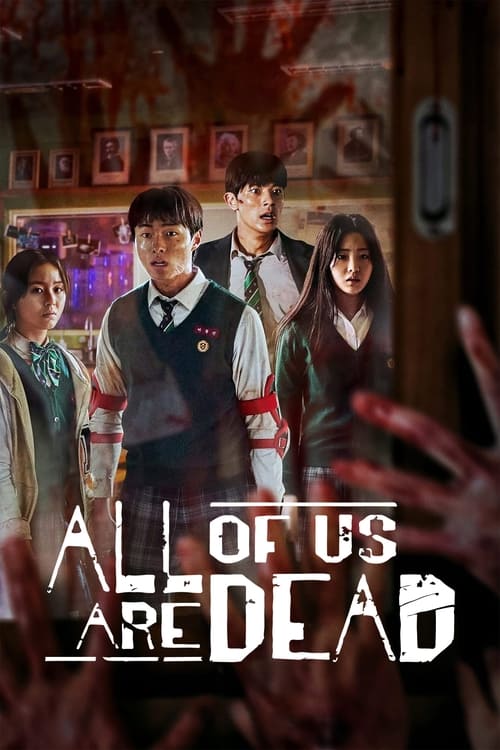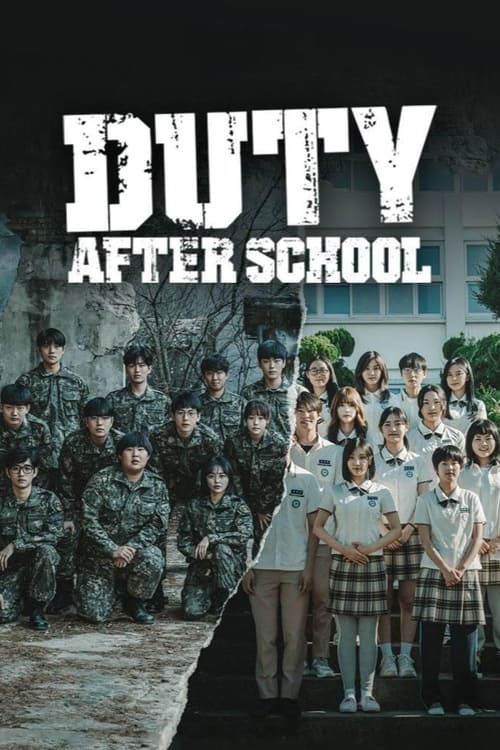
Ask Your Own Question
What is the plot?
In the opening scene of "One Man's Life," the episode begins with a tense atmosphere as the residents of the apartment complex are grappling with the aftermath of the recent events that have unfolded in their lives. The camera pans through the dimly lit hallways, capturing the anxious expressions of the residents. The focus shifts to the main character, Jung Yi-hyun, who is seen pacing in his apartment, visibly troubled by the escalating situation surrounding the mysterious infections that have been plaguing the community.
As Yi-hyun contemplates the growing fear among the residents, he receives a phone call from his colleague, who informs him about a recent incident involving a neighbor. The urgency in his colleague's voice prompts Yi-hyun to rush out of his apartment. He navigates through the building, where he encounters several residents whispering about the strange occurrences, their faces filled with worry and suspicion. This moment highlights the growing paranoia within the community.
Upon arriving at the scene of the incident, Yi-hyun finds a group of residents gathered outside an apartment. They are discussing the strange behavior of the neighbor, who has been acting erratically. Yi-hyun steps forward to assess the situation, and as he approaches the door, he notices signs of a struggle inside. The tension escalates as the residents express their fears about the potential threat posed by the neighbor, leading to a heated debate about whether to confront him or call for help.
In a pivotal moment, Yi-hyun decides to take charge and knocks on the door, calling out to the neighbor. When there is no response, he pushes the door open, revealing a chaotic scene inside. The neighbor is found in a distressed state, surrounded by disarray. Yi-hyun attempts to communicate with him, but the neighbor's erratic behavior escalates, leading to a confrontation. The other residents, feeling emboldened by Yi-hyun's actions, join him in trying to subdue the neighbor, resulting in a chaotic struggle.
As the confrontation unfolds, the neighbor suddenly lashes out, causing Yi-hyun to stumble back. The residents panic, and in the ensuing chaos, Yi-hyun manages to restrain the neighbor with the help of a few others. They call for medical assistance, and the atmosphere is thick with fear and uncertainty as they wait for help to arrive. This moment serves as a catalyst for the residents to confront their fears and the reality of their situation.
Later, the episode shifts focus to another character, Seo Yi-soo, who is dealing with her own internal struggles. She reflects on her past decisions and the impact they have had on her life. The camera captures her emotional turmoil as she grapples with feelings of guilt and regret. This introspection is intercut with scenes of her interactions with other residents, showcasing the growing bonds and tensions within the community.
As the episode progresses, the narrative delves deeper into the backstories of several residents, revealing their motivations and fears. Yi-soo's character arc becomes more pronounced as she confronts her past relationships and the choices that have led her to this point. The emotional weight of her journey is palpable, and the audience is drawn into her internal conflict.
In a climactic moment, the residents gather for a meeting to discuss the recent events and the growing threat of the infections. Tensions rise as differing opinions emerge about how to handle the situation. Yi-hyun advocates for a united front, urging the residents to support one another, while others express skepticism and fear. This meeting serves as a turning point, highlighting the fractures within the community and the varying responses to the crisis.
The episode concludes with a haunting scene as Yi-hyun stands alone on the rooftop, looking out over the city. The weight of the events weighs heavily on him, and the camera captures his sense of isolation amidst the chaos. The final shot lingers on his face, reflecting a mix of determination and despair as he contemplates the uncertain future that lies ahead for him and the residents of the apartment complex.
What is the ending?
In the ending of "Happiness," season 1, episode 6 titled "One Man's Life," the characters face the consequences of their choices. The episode culminates in a tense confrontation that reveals deep-seated emotions and unresolved conflicts. The main characters grapple with their relationships and the impact of their actions, leading to a poignant resolution that leaves them at a crossroads.
As the episode unfolds, we see the aftermath of the previous events weighing heavily on the characters. The atmosphere is thick with tension, and the stakes are high. The episode opens with a close-up of the protagonist, who is visibly shaken, reflecting on the choices that have led to this moment. The camera pans to show the other main characters, each caught in their own turmoil, as they prepare for a confrontation that has been building throughout the season.
Scene by scene, the narrative progresses. The protagonist gathers the courage to confront a key figure in their life, leading to an emotionally charged exchange. Words are exchanged that cut deep, revealing vulnerabilities and regrets. The dialogue is sharp, filled with raw emotion, as each character lays bare their feelings of betrayal, love, and longing. The tension escalates, and the stakes become personal, as the characters realize that their lives are intertwined in ways they had not fully acknowledged before.
In a pivotal moment, a character makes a choice that alters the course of their life, symbolizing a break from the past. This decision is met with a mix of relief and sorrow, as the character understands the weight of their actions. The camera captures their expression, a blend of determination and fear, as they step into an uncertain future.
As the episode nears its conclusion, the characters begin to find a semblance of resolution. They confront their fears and insecurities, leading to moments of vulnerability that allow for healing. The protagonist, in particular, experiences a transformation, moving from a place of despair to one of hope. The final scenes are filled with a sense of possibility, as the characters take tentative steps toward rebuilding their lives.
The episode closes with a montage that highlights the characters' journeys. Each one is shown in a moment of reflection, contemplating their choices and the paths ahead. The camera lingers on their faces, capturing the complexity of their emotions--hope, regret, and the desire for happiness. The screen fades to black, leaving the audience with a sense of unresolved tension but also a glimmer of hope for the future.
In summary, the fate of each main character is intertwined with their choices. The protagonist emerges with a renewed sense of purpose, while others grapple with the consequences of their actions. The episode encapsulates the themes of connection, choice, and the pursuit of happiness, leaving the audience to ponder the complexities of life and relationships.
Is there a post-credit scene?
In the episode "One Man's Life" from the series Happiness, there is no post-credit scene. The episode concludes without any additional content after the credits roll, focusing instead on the emotional resolutions and character developments that have unfolded throughout the episode. The narrative wraps up the key themes and character arcs, leaving viewers with a sense of closure regarding the events that transpired in this particular episode.
How does the relationship between the protagonist and his love interest evolve in this episode?
Throughout episode 6, the relationship between the protagonist and his love interest deepens as they navigate the complexities of trust and vulnerability. A key scene involves a heartfelt conversation where they share their fears and hopes, allowing them to connect on a more intimate level.
What significant event occurs in the life of the main character in episode 6?
In episode 6, titled 'One Man's Life', the main character, who is struggling with his past decisions, faces a pivotal moment when he confronts the consequences of his actions. This confrontation leads him to reevaluate his relationships and the impact of his choices on those around him.
What role does the supporting character play in influencing the main character's decisions?
In this episode, a supporting character serves as a catalyst for the main character's transformation. Their candid advice and personal experiences challenge the protagonist to confront his fears, ultimately pushing him towards making a life-altering decision.
What internal conflict does the main character experience in this episode?
The main character grapples with guilt and regret over past mistakes, which manifests in his interactions with others. This internal conflict is highlighted in a scene where he reflects on his choices, leading to a moment of clarity about what he truly desires in life.
How does the setting influence the events of episode 6?
The setting in episode 6 plays a crucial role in shaping the narrative. The protagonist's environment, particularly a significant location tied to his past, evokes memories that drive the plot forward. This backdrop enhances the emotional weight of his journey as he confronts both his history and his future.
Is this family friendly?
In "One Man's Life," episode 6 of the series "Happiness," there are several scenes and themes that may be considered objectionable or upsetting for children or sensitive viewers.
-
Violence and Threats: The episode includes moments of tension where characters face threats, which may be distressing for younger audiences.
-
Mental Health Struggles: There are depictions of characters dealing with anxiety and depression, which could be triggering for some viewers.
-
Intense Emotional Scenes: The episode explores deep emotional turmoil and conflict among characters, which may be heavy for sensitive viewers.
-
Mature Themes: Discussions around life choices, mortality, and the impact of personal decisions on family dynamics are prevalent, which may be complex for younger viewers to understand.
-
Confrontational Interactions: There are scenes of confrontation that may include harsh language or aggressive behavior, which could be unsettling.
These elements contribute to a narrative that, while rich in character development and emotional depth, may not be suitable for all audiences, particularly children.








































